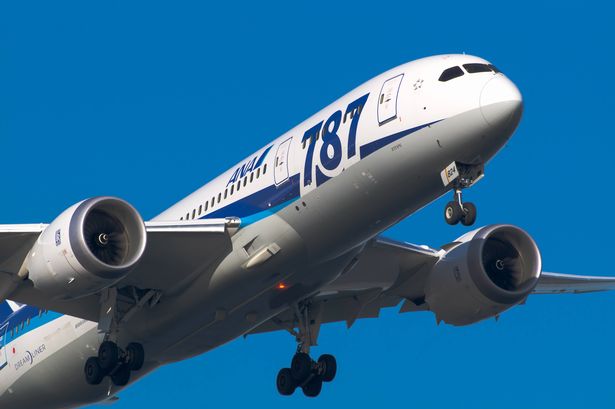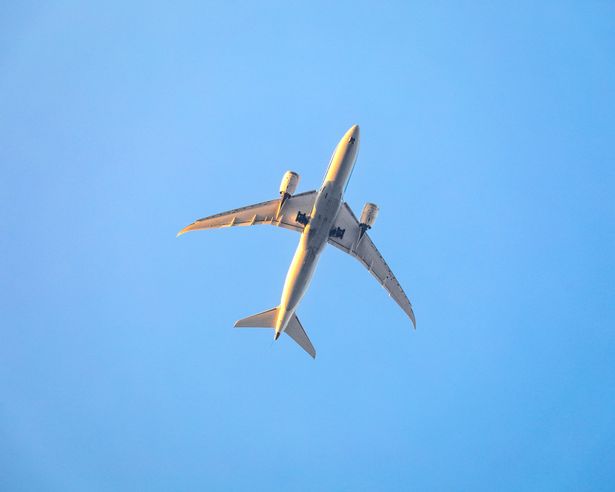A London-bound Air India plane carrying more than 240 people crashed shortly after takeoff Thursday. The plane in question was a Boeing 787-8 Dreamliner, which was the subject of recent whistleblowing claims
Tragedy struck when an Air India aircraft destined for London with over 240 souls on board met a catastrophic end shortly after takeoff on Thursday.
The incident involving the Air India flight 171, a Boeing 787-8 referred to as Dreamliner, occurred when it crashed into a residential zone barely five minutes following its departure.
In response to the news, a Boeing spokesperson said the company was aware of the crash reports and is “working to gather more information.”
This marked the inaugural fatal accident involving a Boeing 787, a modern widebody, twin-engine jet also recognised as the Dreamliner. However, this adds to the recent spate of misfortunes for Boeing, with the majority linked to the 737 Max, one of their different models.
READ MORE: All the possible Air India crash causes – from engine failure to pilot error
The crash has led many to question whether flying on a Dreamliner is safe, how they can find out if they’re booked onto one and if they’re able to choose a different aircraft if they are. Here’s everything you need to know:
Is flying on a Dreamliner safe?
Up until now, the Dreamliner 787-8 had recorded no fatalities, according to the Aviation Safety Network. The plane involved in the crash was built in 2013, with Air India flying nearly three dozen of the jets. The first Dreamliner was delivered in 2011.
It will take a long time to find out what the cause of this crash was, although crashes tend to be the result of multiple different factors such as bird strikes, pilot error, manufacturing defects and inadequate maintenance.
Dreamliner’s safety record has come under an unusual amount of scrutiny in recent years. Deliveries of the plane were paused for more than a year until the summer of 2022 so that manufacturer Boeing could address quality concerns on some of the aircraft, the New York Times reports.
This included filling paper-thin gaps in the plane’s body and replacing some titanium parts that were made with the wrong material.
The view of Nigel Thompson, The Mirror’s Travel Editor
This is a terrible tragedy and my heart goes out to anyone affected.That said, the Boeing 787 Dreamliner is a superb long-haul, twin-aisle aircraft, a 21st century 40,000ft workhorse triumph of modern carbon-body aeronautical engineering and, until this awful tragedy, it had a superb safety record.Notwithstanding this horrendous crash, flying is still an incredibly safe way to travel and very well regulated.Clearly something has gone catastrophically wrong, but we should wait to see the technical evidence from the black boxes before any accusations are levelled at Boeing or the engine manufacturer, GE Aerospace.I have a lot of experience of the Dreamliner – in 2012 I flew on one of the prototype ’demonstrators’ from Manchester to Luton and back, visited Boeing’s mind-bogglingly vast Everett factory in Seattle and then was on board the first commercial fight from the UK, which went from Glasgow to Cancun in Mexico in 2013. I have flown on a 787 many times since.The ‘jetlag-busting’ Dreamliner offers excellent onboard experiences as it is quiet, light and airy with moister air for less chance of dehydration and headaches, lower cabin pressure which is less tiring and, for those concerned about the carbon footprint, it is an extremely fuel-efficient aircraft.Whatever Boeing’s challenges with the short-haul 737 MAX, it has sold and delivered 1,189 Dreamliners and, only last month, British Airways ordered 32 of the latest 787-10, the third variant.Would I get on a Dreamliner today? Absolutely, yes.
In response to whistle-blower claims that parts of the body of the Dreamliner were not properly fastened together, Boeing publically claimed that there was no evidence of this following extensive testing. The manufactuer released testing data which showed that one 787 test airframe had shown no signs of fatigue after the equivalent of 165,000 flight cycles, the NYT reports.
Back in 2022, the longest-serving Dreamliner in actual service had flown only a tenth as far as the test plane.
What tests are carried out to ensure planes are safe to fly?
All planes, including Boeing, are required to undergo comprehensive safety checks involving pre-flight inspections, maintenance programs and regulatory oversight. Among the required checked are daily and pre-flight inspections by engineers and pilots, and scheduled maintenance checks. These involve regularly checking machines and replacing parts to maintain performance, increase efficiency and ensure reliability.
READ MORE: Air India crash: One of two black boxes has been recovered from plane wreckageREAD MORE: Air India crash: Inside video call survivor made to dad as plane burst into flames
Is flying getting more dangerous?
While it may feel like it thanks to a series of high profile incidents, the short answer is no. Travel via commercial aircraft remains one of the safest forms of travel.
A 2017 Harvard study placed the odds of dying in a plane crash at one in 11 million, compared to one in 5,000 for a car crash. An International Air Transport Association annual safety report published this year found that commercial air travel is getting safer, generally speaking.
The accident rate last year was better than the five-year average, but worse than the best year recorded in 2023.
How can I find out if I’m flying on a 787-8?
Almost all airlines list the type of aircraft they’ll be using during the booking process. If you’ve already booked, you can use third-party sites like SeatGuru and FlightRadar24 to look up the aircraft type after you’ve booked by tapping in your flight number.
Can I cancel my flight if I’m worried about the plane type?
If you call up your airline and explain that you don’t want to fly on a certain type of airline, they may help you switch flights. But that would be up to them to decide. They’d have no legal obligation to do so unless you bought a flexible fare or very good travel insurance that specifically allows you to change your flight.

